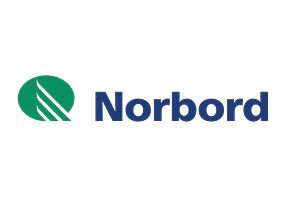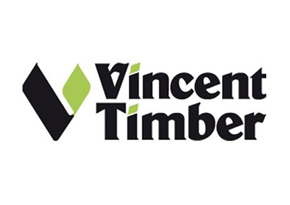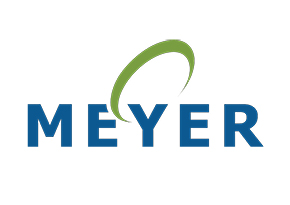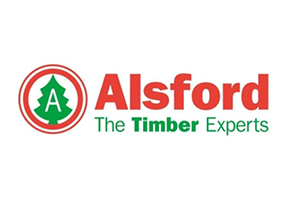Cladding
Timber cladding is very much in vogue. Designed well, it can produce a beautiful, long-lasting, low maintenance rain screen. However, when mistakes are made in the design it is usually very visible.
Using our FAQs, simple guides and cladding detailing book below, let us help you get the design right first time.
For design consultancy, inspections and training on cladding, call our technical helpline on +44 (0)1494 569601. All commercial services are provided by TRADA’s service provider, Exova BM TRADA.

What type of fasteners should I use with timber cladding?
Stainless steel or non-ferrous fasteners are preferred to prevent long term corrosion and possible chemical reaction with some timber species.
Softwoods can generally be fixed with suitably sized ring-shank nails, but TRADA recommends hardwoods are fixed with screws and washers through oversized holes where double fixings are used. There are options for discreet fixing, but this is an area where specific advice should be sought from an expert source.
How can I prevent my cladding from leaching out extractives?
Some species commonly used as uncoated cladding are prone to extractive staining. As the boards weather, they can leach out extractives that can stain other boards, or the surfaces of other materials below or adjacent to them.
Measures that can be taken include careful building design including water-shedding details to direct rainfall away from the cladding and protecting absorbent surfaces around the cladding from the runoff during the initial weathering process.
I want to clad onto a curved surface, what should I consider?
Horizontal boards cannot be easily bent around tight radial curves, particularly if they have a tongued and grooved profile. It is therefore preferable to use vertical boards, with horizontal battens that curve.
This curvature can be achieved, for example, by building the battens up in layers thin enough to be bent cold, before fixing them into position by gluing and screwing.
Cladding on a curved surface should be designed to mitigate water runoff collecting in cavities and capillary action causing high moisture content at joints.
Does timber cladding need fire retardant treatment?
There are Building Regulations in place which are intended to restrict the spread of fire. Depending on its location, wood cladding may require pre-treatment with a fire retardant, which must be compatible with any preservative treatments and coatings. Timber cladding may not be acceptable close to boundaries or above a certain height. It is recommended that you check with the Local Authority Building Control.
How can I remove staining that has developed on timber cladding?
Some woods have high extractives content, and this may take several months for the rain to ‘wash out'. Other staining may be due to excessive wetting, chemical staining, or pollution. There are a number of ways of removing stains, from washing to the application of chemical cleaners. The method of cleaning depends on the cause of the staining, and this can be identified by on-site inspection/investigation.
Further information on discoloration of cladding and maintenance options is available in our research area.
What board sizes are recommended?
There are many different profiles, but TRADA recommends that boards should be 150mm maximum width, to limit the effects of any moisture movement across the board. Tongued and grooved boards should be further limited, preferably to 100mm (max 125mm), with only kiln-dried wood used.
Board thickness is dependent upon the profile. TRADA also recommends that any individual part of the board, for example the tongue or top edge of a featheredge board, should not be less than 9mm in thickness.
What species are suitable for use in timber cladding?
Softwood is the most common choice for cladding in the UK, with home-grown species increasingly selected. A variety of hardwoods and modified woods are also suitable however.
When selecting species, consider the natural durability of the wood and the options for preservation and coating. Durable species may be more expensive to specify at the outset but may require less maintenance than a cheaper, less durable species.
Appearance (usually in respect of the size and frequency of knots) is also an important consideration and will determine which species to choose.
Where can I get more help?
TRADA membership
As a member of TRADA you can enjoy free access to our entire online collection of technical guidance on not only cladding but all other construction related topics.
You can also use our Technical Helpline (01494 569601) for free at any time during office hours. (Please note that advice is limited to 30 mins per call. Commercial consultancy by BM TRADA can also be provided where written or professional opinion is required on specific products or projects.)
Introductory guidance
You can register for free and download some of the guidance below:
- Yearbook article: Top ten tips for timber cladding
- Choose and use: External wood cladding (members only)
- Wood information sheet: Cladding for external timber frame buildings (members only or available in our bookshop)
- Wood information sheet: Timber cladding for building refurbishment (members only or available in our bookshop).
Comprehensive guidance / books
External timber cladding, 3rd edition (online edition for members only or available in our bookshop).
Training
We run introductory and intermediate training courses on a range of timber topics.
In-house courses can also be provided.
Consultants and commercial services
BM TRADA is able to provide a wide range of commercial services including product testing, certification, CE marking, and product design advice.
Further information can be found in our book External timber cladding, 3rd edition, a comprehensive guide to the design and specification of timber cladding.

































